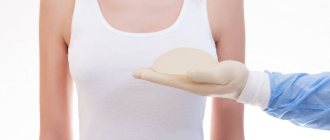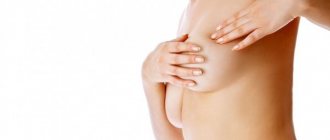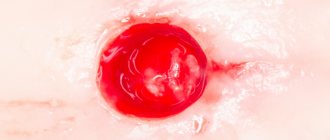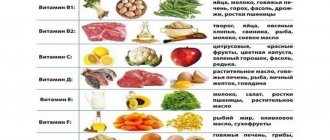Breasts grow until the age of 20-23, the process begins at the age of 8-10 and continues throughout the entire period of puberty. It goes through several stages. You can adjust the size of the mammary glands with proper nutrition, massage, and exercise. Taking hormonal drugs to enlarge the bust is strictly prohibited; plastic surgery would be safer.
Until what age do breasts grow?
There is constant debate around the age at which women's breasts grow: some doctors and scientists claim that this process stops by the age of 20, others by the age of 16. But there is always a chance that your bust size will increase after pregnancy and breastfeeding. Breast growth is an individual factor that depends on many nuances: the girl’s hormonal background, the amount of subcutaneous fat, dietary habits, and others.
Some scientists even recognize a woman’s nationality as a factor in mammary gland growth. For example, indigenous women of Yakutia and Finland almost always have small breasts, but representatives of the Armenian and Georgian nationalities can boast of curvaceous figures.
Ideal female breast shapes
Stages of development
Each woman has her own individual hormonal balance, so breast growth occurs differently for all representatives of the fair sex. However, in its formation, this part of the body goes through several identical stages. Below are the stages of female bust formation identified by doctors.
From birth to 10 years
Initially, newborn boys and girls have breasts that are no different. Only in girls in the chest area can you barely notice traces of the milk line, which is located in the lower part of the nipples. Over time, her breasts will begin to form from this area. Some newborn girls may experience discharge from the nipple in the first days after birth. In medicine, this is not considered some kind of pathology.
By the end of this stage of breast formation, the glandular tissue is still undeveloped. Only a slight hardening of the nipple occurs.
Beginning of puberty
The bust of a teenage girl begins to change noticeably at the age of 12-13 years. This happens due to the restructuring of her hormonal levels and the beginning of puberty as a schoolgirl.
As a rule, this stage is accompanied by unpleasant and painful sensations in the chest area. This occurs due to stretching of the skin, which can also be accompanied by itching and burning. The girl's nipple takes on a more rounded shape, and the mammary glands themselves become elastic and slightly soft. For those teenagers whose puberty occurs much later, the breasts may become slightly denser, but their shape may not change at all.
Puberty
At the age of 13-15 years, active growth of the mammary glands and a significant increase in connective tissue are observed. The girl's breast takes on the shape of a cone, and her nipple becomes rounded. The pain becomes much stronger than in the previous phase. The girl is haunted by unpleasant discomfort due to a feeling of compression in the chest area. This occurs due to the rapid growth of ducts in the mammary glands. The bust of a young girl can increase by one size even in one day.
Completion of puberty
From the age of 15-16 years, a girl enters reproductive age. At this stage, the ducts in the mammary gland continue to actively grow, and the surface tissue of the breast stretches and thins. Blood vessels become visible through them. The painful sensations do not leave the girl. By the end of this stage, the girl’s breasts are rounded and take on the shape of an adult woman. The nipples and the circle around them acquire clearer lines and darker pigmentation. The size and proportions of a woman’s bust no longer change and remain the same until pregnancy and childbirth.
How breasts grow
Breasts do not grow constantly, but in periods - they can be clearly traced by the girl’s age, changes in certain years are visible even to others: the initial stage is 9 years, but only the first symptoms of changes can be felt (swelling, a feeling of heaviness, fullness), but by 16-20 most often you can already see the final shape.
Stages of breast growth
It is customary to distinguish 3 main stages of breast growth:
- 9-10 years - the beginning of the process, the girl’s breasts acquire rounded shapes;
- 12-16 years – a period of active growth, when changes occur every month;
- 15-16 years - according to statistics, growth stops in most cases.
Sometimes the increase in the size of the mammary glands can continue until the age of 20. This is also possible during pregnancy and breastfeeding, regardless of the woman’s age.
When do breasts start to grow?
Breast growth begins at the age of 9-10 years, but this is a conditional indicator - a girl may have an increased or decreased amount of estrogen in the body - a hormone that directly affects this process.
The beginning is easy to notice:
- the nipple becomes rough and protrudes;
- the areola enlarges, but does not change its color;
- A loose ridge forms in the lower part of the chest - this is where glandular tissue begins to grow.
We recommend reading about breast reduction surgery. From the article you will learn about the types of surgical procedures to change the mammary glands, the necessary preparation of the patient and the method of performing the surgical intervention, the results. And here is more information about the results of seamless breast augmentation.
Why breasts grow: main factors
What affects breast growth:
- Physiological parameters of the girl. If her weight is within the normal range and the girl is thin, then she is unlikely to have large breasts - there is a direct relationship between the size of the mammary glands and the subcutaneous fat layer in the chest area.
- Genetic predisposition. If a girl’s family includes women with small busts, then you should hardly expect a large size. On the contrary, if this happens, you should consult a doctor - uncontrolled, atypical growth may indicate the development of severe pathologies - for example, diseases of the endocrine system, oncology.
- Diet . Insufficient intake of microelements, proteins, fats and vitamins can lead to inhibition of breast growth. In some cases, it stops altogether - this is often found in teenagers who follow strict diets.
Doctors say that the bust grows evenly against the background of moderate, regular physical activity, with correct posture and the absence of spinal diseases (scoliosis).
Watch this video about when a girl’s breasts should form and what diseases can cause delayed sexual development:
What kind of breasts should a 16 year old have?
At 16 years old, the breasts should already be formed:
- round shape;
- smooth contour;
- non-protruding nipple;
- dark brown color of the areola.
This is conditional data, because some girls at this age still have active breast growth. You cannot rely on these indicators and you should not invent illnesses if you discover an irregular shape of the mammary gland or a light color of the nipple circle - this is not a deviation from the norm until the age of 20.
Structure of the mammary gland
What age do girls grow to?
Girls grow up to 23 years old. By this age, the figure is fully formed and the growth of the foot stops. But this does not mean at all that the mammary glands will increase until the specified age - they grow first, which is provided by nature - by the specified age, many become nursing mothers.
Data about the age of a girl’s final growth/formation “work” only if her health is impeccable - there are no deviations in the functionality of the endocrine system, she regularly plays sports, and so on.
Anatomy and physiology of the mammary glands.
The mammary gland (MG) is a paired organ that produces milk, the natural food of infants. It is located on both sides on the anterior chest wall between the II and VI ribs from the edge of the sternum to the anterior axillary line. It is believed that breasts are modified sweat or sebaceous glands. The breasts are formed in the embryo at the 6th week of intrauterine development from elements of the ectoderm, are formed from the lateral ventral folds of the ectoderm of the embryo, consist of several layers of epithelial cells and stretch from the axillary to the inguinal region (“mammary folds” or “milk lines”). MFs develop from the milky puncta of these lines. In humans, these folds subsequently leave two tubercles - the fourth pair of milk points. These are future breast cancer [1, 6, 17, 22, 33, 34].
The breasts consist of glandular, connective and adipose tissue, blood and lymphatic vessels, nerves and highly differentiated tissue, represented by many tubular ducts, branching into a large number of alveoli, united into lobules.
Supporting and periglandular stroma of the breast.
During the period of breast growth, the connective tissue around existing ducts loosens, becomes enriched with cellular elements, and numerous capillaries appear. The number of ducts itself increases, numerous lateral branches of the ducts are formed, around which glandular tissue intensively develops, which is mainly located along the periphery of the gland. The proliferation of the epithelium increases, which promotes the formation of capillary structures. Indeed, at the beginning of breast development, an increase in the number of vessels is observed. Then the supporting and periglandular stroma proliferates and an increase in fat deposition is noted, and from the age of 15 years there is a pronounced activation of the growth of glandular tissue. The secretory activity of the ductal epithelium and the volume of the ducts themselves increase. These changes occur under the influence of hormones, the nature of the interaction of which determines the final mammogenic effect [9, 12, 33, 34].
Puberty of most girls begins at 9-10 years of age [2, 5, 13]. Its first symptom is a growth spurt, then other signs of estrogenization appear, including breast growth. A year after the start of breast growth, the appearance of sexual hair is noted, another year - axillary hair and the onset of menarche (first menstruation). According to many authors [3, 18], the age of menarche is most often 12.5–13 years [14, 33]. Domestic authors [5, 15, 19] consider the period from the onset of symptoms of puberty to menarche to be phase I of puberty, and the period from menarche to the final formation of the menstrual cycle to be phase II of puberty (usually up to 16-18 years). Thus, puberty occurs in girls aged 9-10 to 16-18 years and lasts for 7-10 years. During this period, the adult type of luliberin secretion is gradually established. Accordingly, the secretion of gonadotropins increases, and at the same time the ratios of luteinizing hormone (LH) and follicle-stimulating hormone (FSH) change. Thus, before menarche it is equal to 1, a year after menarche it reaches 1.5, 2 years after menarche and before menopause it ranges from 1.5 to 2 [21, 24], i.e. During puberty, LH levels approach values typical for adults. At the same time, the cause-and-effect relationships of gonadotropins with estrogens are strengthened, which promotes the maturation of follicles in the ovaries, and maturing and mature follicles produce more and more estrogens. The initiation of the latter causes puberty, development of the breast and endometrium.
In the first years of puberty, the follicles have not yet reached full maturity, therefore they do not secrete a sufficient amount of estrogens, there is no ovulation, the corpus luteum does not form, and therefore the formation of progesterone does not increase. There is a more or less long period of constant influence of estrogen on the breast, which promotes breast growth, but is not replaced by an increase in progesterone levels.
This is observed in healthy puberty girls. During this period, low levels of progesterone are unable to regulate the long-term active effect of estrogens on the condition of the breast.
A study of breast cancer in girls with symptoms of hyper- and hypoestrogenism showed significant diffuse changes in girls with hyperestrogenism. The described changes were so characteristic that they could be used to predict the level of estrogen in the blood [13, 14, 22, 23].
According to the degree of development of the breast and nipple, in the domestic literature there are 4 stages of development of the breast [3]:
MA-0—no signs of breast development;
MA-1—appearance of breast tissue under the areola (“kidney” stage);
MA-2 - more noticeable enlargement of the gland, an increase in the area of the areola, the nipple is not expressed (the “bud” stage);
MA-3 - a further increase in the size of the gland, a decrease in the area of the areola with increased pigmentation, the appearance of folding of the skin of the areola, and the nipple protruding above the skin level. This is a mature woman.
In the future, the breast may increase or even decrease in size, but it is already mature, since the nipple and areola are formed. With an unformed nipple, the stage of breast development will correspond to the second, no matter what size the breast itself reaches by this age.
Thus, according to E.A. Bogdanova, a “flat” nipple serves as an indicator of insufficient development of the breast during puberty.
The third stage of breast development is usually observed in phase II of puberty, when a regular menstrual cycle is established, i.e. over the age of 13 years.
During pregnancy and lactation, further development occurs in the mammary gland, an increase in the number of lobules and the length of the ducts; at the end of lactation, it undergoes involution with partial replacement by fibrous tissue. In adult men, the breast remains in a rudimentary state.
The structure of the breast.
The ducts and alveoli are lined with one layer of epithelium, the larger ducts are lined with two. After the 20th week of intrauterine development, the epithelial cords of the breast anlage begin to branch at the ends, forming glandular lobules, located in radial directions. The milk ducts of the lobules, merging into the main duct, flow into the sinus of the nipple. The nipple serves as a duct for 10-15 large ducts, into which smaller ones flow. Connective tissue consists of its own fascia, which surrounds the entire gland and gives rise to interlobar ducts [16, 25]. In healthy girls, the entire breast, with the exception of the areola, is surrounded by fat. Nutrition is provided by the branches of the III-VII intercostal arteries, as well as the perforating branches of the internal thoracic artery and the branches of the external thoracic artery [6, 11, 19, 24]. Venous drainage occurs in the axillary and subclavian veins. Lymphatic drainage mainly occurs to the axillary and retrosternal lymph nodes along the internal mammary artery, i.e. connected to all collectors of the lymphatic system.
In a newborn child, in the breast there are excretory ducts collected in the nipple, which looks retracted in the form of a funnel; in the depths of the gland there are branching tubes - milk ducts. After birth, infants of both sexes experience swelling in the area where the breast is located, and a secretion similar in composition to colostrum may be released from the nipples. By the 3rd week of the neonatal period, breast swelling disappears and until puberty, the breasts in boys and girls are practically no different from each other [6, 7, 16, 33].
In subsequent years, girls experience a spasmodic development of breast cancer. Periods of accelerated development alternate with periods of slow development. There are two periods of increase in the number of glandular structures in childhood. These are ages 4 and 9 years. It is during these age periods that parents may notice an increase in the girl’s breast tissue, and consult a doctor about this. A noticeable increase in the size of the breast, as a rule, begins at the age of 10–12 years, i.e. with the onset of puberty. At this age, there is an increase in the development of fibrofatty stroma, consisting of supporting and periglandular stroma [6, 8].
Under the influence of estrogens, structural changes occur in the breast, which consist in the expansion and proliferation of ducts [2, 7, 12, 17, 22, 28]. In the premenstrual period, intra- and extralobular ducts are in a state of pronounced hyperplasia; in the luteal phase of the menstrual cycle, edema and swelling of the intralobular stroma develop in the breast. Changes in the breast occur under the influence of ovarian, pituitary, corticosteroid and some other hormones. The causes of the development of pathological conditions in breast tissue may be deviations in the levels of estrogen, progesterone, prolactin, androgens and thyroid hormones [4, 14, 25, 28, 33]. Transient juvenile hyperplasia of the breast, associated with age-related changes in hormonal status, does not require any treatment; it can be regarded as a functional condition. Functional breast hyperplasia in the pubertal period is caused by relative hyperestrogenism against the background of low progesterone levels [2, 7, 12, 22, 31, 33].
As studies by E.A. have shown. Bogdanova [3] and A.V. Telunts [22], the stage of breast development directly correlates with the level of sex and gonadotropic hormones in the blood. In girls under 10 years of age with stage zero of breast development, the concentration of estradiol in the blood is below 100 pmol/l, the LH level is 2 IU/l. In girls with the first stage of breast development, the level of estradiol is usually above 100 pmol/l, LH - 2.75 IU/l. At the third stage of breast development, the level of estradiol is 150-300 pmol/l or more, LH is above 5 IU/l. The level of prolactin during all periods of breast development is 200-250 IU/l [22]. These studies clearly show the role of estrogens in the formation and development of breast cancer. Estrogens cause proliferation of ductal epithelium, growth and development of ducts and stroma. Progesterone regulates the activity of the enzyme 17-hydroxysteroid dehydrogenase-2, which inactivates estrogens, converting the active fraction of estrogens - estradiol - into a less active fraction - estrone. Thus, the level of active estrogens in breast tissue decreases.
Other data are also well known. Thus, in adolescents with congenital absence of ovaries and a very low level of estrogen in the blood, breasts do not develop independently [21, 26, 27].
Dowsing (thermographic) research by E.A. Bogdanova and Yu.N. Bogina (2010) showed an avascular pattern in girls aged 14–17 years with gonadal dysgenesis and the absence of secondary sexual characteristics, i.e. absence of breast tissue. Repeated thermography of this area 5-6 months after the start of estrogen treatment already showed a vascular pattern, and breast tissue of the second stage of development was visually and palpably determined. These data clearly show the role of estrogens in the development of breast cancer in girls.
It can be assumed that disruption of hormonal relationships during puberty can lead to pathological changes in the development of breast cancer. A.V. Teluntz [22] described pronounced hyperplastic changes in the breasts in girls with absolute or relative hyperestrogenism and a reduced level of progesterone in the blood with only a slightly increased level of estrogen.
The secretion and release of milk from the nipples occurs under the influence of prolactin, a polypeptide hormone produced in the anterior pituitary gland, and a small amount of prolactin can be synthesized by peripheral tissues [2, 21, 22]. We cannot discount the conditioned reflex effect on lactation, which intensifies when the child cries or during feeding periods [2, 6, 10, 29, 30]. In the luteal phase of the menstrual cycle, prolactin levels are higher than in the follicular phase. Microprolactin is prolactin bound in immune complexes with antibodies, present in the blood in varying quantities. It is cleared from the blood more slowly than monomeric prolactin and can accumulate in high concentrations. This form of prolactin is less bioactive, and patients with high levels of microprolactin may not have the classic symptoms associated with elevated prolactin levels. One of the indications for prolactin testing is the presence of cyclic pain in the breast. A test for the presence of microprolactin is carried out as an additional study to the determination of prolactin when an elevated prolactin level is detected (according to the relevant recommendations - for all patients with a prolactin level more than 700 mU/l) [2, 5, 7, 21]. Prolactin affects the biosynthesis of milk components: lactose, lipids and the primary protein - casein and its production in the breast. The hormonal trigger for milk production inside the alveolar cells and its secretion into the breast ducts is a decrease in the level of estrogen and progesterone in the circulating blood immediately after childbirth. Oxytocin causes contraction of myoepithelial cells and leads to the release of alveolar contents, enhancing further milk secretion and alveolar filling. The mechanism of increase in prolactin secretion is associated with the suppression of gonadotropin-releasing hormone and direct stimulation of prolactin gene transcription in the pituitary gland [1, 2, 7, 16, 29].
Thus, breast growth and development are stimulated by ovarian hormones and, possibly, prolactin. The main role in the implementation of breast function, of course, belongs to prolactin; it determines the onset and nature of lactation. Some authors [7, 20, 32] believe that the uneven development of glandular tissue of the breast is a physiological phenomenon and is typical for this organ. Most authors note activation of the growth of glandular tissue of the breast at the age of 14-16 years.
P.A. Chumachenko (1991) distinguishes several periods in the development of breast cancer. Until the age of 9-10 years there is a period of relative rest. Breast growth begins at 10-12 years and continues until 14 years, characterized by increased development of the stroma compared to the parenchyma. At the age of 14-16 years, abrupt growth of the breast occurs, during this period tubular lobules are formed. Thus, in 15-year-old girls, the number of glandular elements is 10-11 times greater compared to 14-year-old girls; in addition, tubular lobules appear, more numerous on the periphery of the glands. The process of formation of lobules is very complex; it occurs under the influence of many factors, including the hereditary and constitutional characteristics of the body.
The development of breasts during puberty leads not only to an increase in their size, but also to an increase in the number of ducts and to the formation of the nipple. By the age of 25, breast cancer is usually fully formed [1, 6, 17, 19, 28].
How to understand that your breasts are growing
It is quite simple to understand that the breasts have begun to grow - signs of this process immediately appear; two stages are distinguished:
- pre-pubertal period;
- puberty.
Signs of breast growth in girls
The first signs of growth of the mammary glands in girls appear in the pre-pubertal period - 9-10 years: the nipple becomes engorged, its surface becomes hard/dense to the touch, and “grooves” appear. After 1-1.5 years, the glandular tissue begins to swell under the nipple, which makes it possible to palpate a small ridge.
As soon as the nipple and areola begin to rise slightly above the breast (“puff up”), we can assume that a period of active growth of the mammary gland has begun - changes will be noted literally every month. The girl does not experience any discomfort, but may complain of a feeling of fullness and heaviness in the mammary glands.
If your breasts grow quickly, should you worry?
Breasts can grow quickly for the following reasons:
- temporary hormonal imbalances – their formation occurs, the level of progesterone and estradiol fluctuates;
- there are diseases of the pituitary gland or hypothalamus;
- neoplasms of a benign or malignant nature in the ovaries;
- oncology with tumor localization in any organ or system of the body.
Hormones that affect breast growth
If rapid breast growth continues for more than 3 months, then you need to consult a doctor. You will need to undergo an examination and find out the true reason for this course of the mammary gland growth process. Even if pathologies are not diagnosed, the girl’s condition will need to be monitored, because rapidly growing breasts lead to the formation of irregular contours of the mammary glands and poor posture.
Why did my breasts stop growing?
Breasts may stop growing if:
- the girl’s body contains too small amounts of female estrogen hormones;
- there is a genetic predisposition - in the girl’s family, most likely, all women have small breasts;
- too limited nutrition - often observed when following strict diets (teenagers are especially fond of this);
- lack of vitamins;
- excessive mental stress;
- increased physical activity, performing hard work associated with heavy lifting.
Expert opinion
Tatyana Somoilova
Cosmetology expert
If by the age of 15-16 a girl’s breasts are not growing, and the menstrual cycle is completely absent or occurs with constant disturbances, then you need to seek help from a gynecologist. Most likely, a lack of estrogen in the body will be detected - a condition that can be corrected with medications.
Can breasts grow after 20 years?
After 20 years, breasts can grow in size if the process of enlargement/formation of the mammary glands is too long due to heredity or relates to the individual characteristics of the body. The second option is carrying and giving birth to a child, feeding him: in this case, the growth of the mammary glands can be observed at any age.
Why do breasts keep growing?
It is believed that after 15-16 years a girl may not expect a sharp growth of the mammary glands, but in some cases the breasts continue to grow until the age of 20-23, sometimes it occurs in “waves” until the age of 40. This is facilitated by:
- the level of female hormones in the body;
- presence/absence of endocrine diseases;
- pregnancy;
- breastfeeding a baby.
Reasons for breast enlargement not related to pathologies
In addition to natural processes, breast swelling is sometimes associated with:
- Hormonal contraception - a side effect may be breast enlargement, accompanied by pain and discomfort. You need to consult a doctor and choose a different drug.
- Depressive disorder and stress.
- Use of medications. The greatest risk comes from antidepressants, which can unbalance hormonal levels. The body increases the frequency of formation of some substances and sharply reduces the level of others.
- Injuries, any mechanical damage to the breast - the tissues swell, redness and pain appear. You need to see a doctor.
- Excessive consumption of salty foods on the eve of monthly bleeding. The body accumulates fluid, and salt aggravates the process, preventing lymph from being freely excreted from the body.
A narrow, tight bra or tight-fitting clothing can also cause breast swelling.
How to stop breast growth in teenagers
It is impossible to stop the growth of mammary glands in adolescents. If we are talking about girls, then this is a natural process for their body. The only exception is a too rapid breast enlargement - a medical examination is required to determine the cause of this condition (they will most likely be pathological).
If the growth of the mammary glands is observed in boys, then we are talking about gynecomastia - a disease associated with puberty and the restructuring/formation of the hormonal system. What doctors recommend:
- undergo an examination and find out the level of functionality of the entire endocrine system of the teenager;
- control the growth of the glands, so that if it accelerates, contact specialists in time and exclude or diagnose a developing tumor at an early stage;
- Visit a psychologist with your teenager - it is important to maintain the child’s psycho-emotional state within normal limits and prevent complexes from developing.
Watch this video about who to contact and what examinations are required for breast diseases in children:
Factors influencing growth
Women have different bust sizes. The shape and volume of the breast depends on the following factors:
- Heredity . Representatives of the same family usually have the same bust size. If a girl’s mother and grandmothers have small breasts, then with a high probability she will have the same.
- Hormonal background . Each girl, due to differences in physiology, also has differences in hormones. If there is a lack of female hormones in the blood, breasts may develop slowly or not develop at all.
- Nutrition. A balanced diet for a teenager is also an important factor influencing breast growth. If a girl is too thin, due to a lack of fatty tissue in the body, the bust cannot fully develop. However, even in case of excess weight, the development of milk ducts occurs in conditions of deviation from the norm. In the future, this may make it difficult for the baby to feed naturally.
- Additional factors . It is necessary to take into account the influence on the development of female breasts and the following factors:
- Nationality and place of residence . In southern latitudes, girls, as a rule, reach puberty much earlier than their peers from the northern regions.
- Environmental ecology . The development of the bust can be negatively affected by environmental pollution. Due to poor ecology, a girl can develop many endocrine diseases associated with disruption of the thyroid gland. As a result, puberty occurs with pathologies.
- Physical activity . Undoubtedly, a lack of physical activity in adolescents negatively affects the development of the entire organism, including puberty. Moderate sports activities and training not only maintain muscle tone, but also affect the development, fit and elasticity of the bust.
How to understand that breasts have stopped growing
You can tell that your breasts have stopped growing by the following signs:
- the mammary glands took an even shape - round;
- the chest contour is smooth, has no differences;
- the nipple and areola do not protrude above the surface and can “look” upward;
- the color of the nipple and areola has become brown (may have different shades, but they are all dark).
The most important indicator is that there is no need to regularly update a set of bras due to the inappropriate cup size.
Signs characteristic of breast growth
Typically, signs that a girl's breasts are growing appear within several years. Active growth can be recognized by the following specific features:
- The main and important symptom of breast growth is the appearance of unpleasant pain in this area. If a girl is very bothered by chest pain, it is recommended to visit a pediatric gynecologist.
- When feeling the breasts, slight enlargements are noticeable in the area of the nipples.
- The nipples become quite sensitive and more pronounced. Now they can be seen even through clothes.
- Darkening of the breast halos occurs.
- Small hairs may appear on the chest. It's completely natural.
- Small dots and bumps will appear on the areolas. These are the exits of glands that will subsequently moisturize the nipples. This property will be very useful after the birth of the baby.
- One breast may become slightly larger than the other.
- Itching with burning may be present.
- With rapid breast growth, small stretch marks may appear on it. In this case, it is necessary to use moisturizing creams.
Many girls are afraid of the changes happening to them. To reassure them, parents need to talk to the teenager and explain that all these are natural processes. She is simply beginning to become a woman. Parents should also understand that such changes are just the beginning and support the child.
Why do breasts grow with age?
After 20-23 years, breast growth stops, but with age, breasts can increase in size for the following reasons:
| Reasons for normal breast enlargement | What's happening? |
| Body weight increases | The mammary gland consists of adipose and glandular tissue and, naturally, with an increase in body weight and obesity, the fat layer in the mammary glands also grows - they literally “swell” and become lush. |
| Pregnancy | A restructuring of the woman’s hormonal system occurs, which leads to breast enlargement. An additional factor is the filling of the ducts with milk - growth is noted at the end of the gestation period. |
| Feeding the baby | The reason is banal - the mammary glands are filled with milk, after sucking it out, the breasts seem to “fall off”, but after a while they become lush and large again. |
| Hormonal changes | If there is an excess of prolactin, for example, the bust becomes “full”, as during pregnancy. |
Most of the reasons listed are natural. If these factors are excluded from a woman’s life, then the breasts will quickly return to their previous size. The only caveat is that during a rapid and “unauthorized” enlargement of the mammary glands, a sharp stretching of the skin occurs, which contributes to the formation of stretch marks. In the future they remain, which causes sagging breasts.
At the age of 30-50 years, there is a high risk of developing tumors in the mammary glands, so their enlargement without obvious reasons should be the reason for a visit to the doctor. It is also important to visit a specialist if your breasts hurt, become engorged, or there are other reasons to suspect a hormonal imbalance.
Watch this video about the structure of the mammary gland and risk factors for the development of cancer processes in it:
The period when breast growth begins and stops
This question is not uncommon. However, there is no exact answer to this. This is due to the fact that in girls the timing of sexual development and its onset is very individual. The development of the mammary glands and the completion of their growth depend on the individual set of hormones in the body. Thus, in sexual terms, some adolescents mature by the age of 9, while others can only reach this phase by the age of 12.
Along with the beginning of breast development, the girl also exhibits other signs of puberty:
- hair growth in the pubic area and armpits;
- pronounced increase in sweating;
- the beginning of the formation of the menstrual cycle;
- increase in volume in the hips and pelvis.
The development of the bust in girls is completed due to the end of puberty. On average, this period occurs at 16 years. However, doctors do not consider the achievement of sexual development within 17-20 years to be a significant deviation from the norm. Later, you should not expect any serious changes in the mammary glands.
According to doctors, the end of growth of female mammary glands can be roughly calculated using the following formula: the beginning of menstruation plus 3-5 years. But you should not assume that after this period of time the mammary glands will not undergo changes. Since the female breast has a close relationship with the reproductive organs and the endocrine gland, it will be subject to some modifications throughout its life.
What can cause breasts to grow?
There are a number of “events” that can cause breasts to grow:
- special exercises;
- specific diet;
- massage and other physiotherapeutic procedures.
Doctors are quite skeptical about these methods of mammary gland enlargement - there are too many disadvantages, although there are also advantages from the manipulation.
Nutrition: will cabbage, beer help?
To speed up breast growth, your menu should include:
- peas, lentils and other legumes;
- nuts (preference – walnuts);
- fish is not fatty and from the “red” category;
- liver - poultry, pork, beef;
- milk;
- pumpkin seeds;
- flax seeds;
- cheese - soft varieties such as Adyghe and tofu are especially useful.
Of course, these products do not “directly” affect breast growth, but they contain folic acid and phytoestrogens, which will have a beneficial effect on the process of formation of the mammary glands.
There is an opinion that breasts will actively grow if a woman eats a lot of cabbage and drinks beer . Here's what doctors think about this:
- cabbage contains phytoestrogens, which prevent the development of mastitis;
- this vegetable maintains the tone of the skin, which ensures the preservation of the shape of the breast;
- beer enlarges the mammary glands only in men;
- A foamy drink leads to an increase in body weight, which, naturally, will ensure the acquisition of curvaceous breasts.
In terms of growth and enlargement of the mammary glands, beer and cabbage are absolutely useless products.
Exercises
Directed physical activity makes the breasts more toned, improves the tone of the skin on them, and visually they become much larger in size. But in fact, breast enlargement really only occurs visually - physical exercise works the muscle tissue that is located above the chest. They become strong, elastic and “pull” the mammary glands up. The simplest exercises are:
- Push ups. They can be performed from the floor, from a chair, or even from the wall - as convenient.
- Wave your arms. You definitely need to pick up dumbbells, swings are performed forward and backward, you can spread your upper limbs to the sides, lift them up.
- Pull-ups. Performed from a horizontal bar, you can be in a hanging position or reclining.
A set of physical exercises does not need to be performed daily - muscles grow in the breaks between workouts, so three times a week will be enough. Every day it is worth performing the “prayer” exercise:
- sit on a chair, straighten your back;
- place your hands in front of you, bend your elbows and bring your palms towards each other - as if a prayer is beginning;
- during a deep breath, begin to press your palms towards each other, offering resistance;
- after 5-10 seconds, exhale deeply and relax your upper limbs, moving your palms 5 cm apart from each other.
A set of exercises to strengthen the chest muscles
The listed exercises not only strengthen the muscles, but also contribute to the formation of correct posture, which is also “responsible” for the size and appearance of the breasts. When the back is straight, the mammary glands take the correct position.
Massage: pros and cons
Breast massage is carried out 2-3 times a week. Stroking, rubbing, patting and circular movements are performed slowly and effortlessly at first, gradually accelerating and pressing on the chest. As a result of this procedure, blood circulation increases, lymph flow improves, excess fluid is removed from cells, and skin tone increases. Together, this gives the effect of enlarging the mammary glands.
During the procedure, you can and should use cosmetic oils - the massage will take place without any discomfort for the woman, and additional nutrition will be provided to the breast cells.
Many doctors are against massage because it can provoke active growth of tumors and mammary gland cysts . Even if the neoplasms are microscopic in size, after shaking and heating they begin to pose a threat to the health and life of a woman.
Sex and hormones
French doctors claim that regular sex promotes breast enlargement.
They argue that sex provokes a sharp release of the hormone estrogen in the body, which causes the growth of the mammary glands. This theory has not received official confirmation.
As for taking hormonal drugs, those women who use birth control pills note an increase in the size of the mammary glands by 1-2 sizes.
But there is no need to rejoice - this is a side effect of long-term use of hormonal drugs and serves as a reason to change the contraceptive.
In addition, some hormonal pills provoke the formation of tumors in the tissues of the mammary glands, which can transform from benign to malignant.
Self-administration of contraceptive hormonal pills inappropriately, without individual selection by a doctor, poses a real threat to a woman’s health.
Growth stimulation methods
The shape and size of the bust are largely determined by heredity and national factors. Therefore, with all the desire, not everyone can become the owner of curvaceous figures. However, the attractiveness of a woman’s breasts is assessed not so much by its volume as by its elasticity and fit. Therefore, the formation of beautiful breasts in girls can still be influenced. To have a beautiful bust, you need to follow the recommendations for proper nutrition and regularly engage in active training.
Supply system
A healthy and balanced diet cannot significantly enlarge your breasts, but it does contribute to their proper development.
During puberty, nutritionists advise girls to include the following foods in their diet:
- Flax seeds, walnuts, greens, pumpkin, soybeans, which have phytohormones.
- Cabbage, legumes, grains that contain folic acid. It helps cell renewal and is generally very beneficial for the female body.
- Fruits and vegetables that are red and orange in color.
- Lots of clean still water.
Sports training
At the stage of breast growth, girls should engage in active training, which should be focused on strengthening the chest muscles.
Among the sports exercises that help maintain toned pectoral muscles, the following are the most effective:
- push-ups from the floor or from a bench;
- ball squeezing exercises;
- jumping rope.
It is worth noting that exercises should be performed regularly, but excessive loads are not recommended. For good results, no more than 3 sessions per week are enough.
At what age can you have breast enlargement?
Any clinic provides breast augmentation services from the age of 18 , but the general state of her health must be taken into account:
- are there any abnormalities in the functioning of the endocrine system;
- whether the formation of the body and mammary glands has been completed;
- whether the breasts continue to grow.
Lipofilling of the mammary glands
Reasons for lack of development
Women's mammary glands may slow down their development or stop growing altogether. This occurs when there are significant deviations in a girl’s sexual development. As a rule, they are associated with a lack of female sex hormones - estrogens - in the body.
If you suspect slower breast growth, you must definitely visit an endocrinologist . After all, the hormonal imbalance in the body has a great impact on the entire subsequent life of a woman as a mother. It is likely that the specialist will prescribe hormones to the girl in the form of injections.
A little more truth and myths
Cabbage does not affect breast growth, but scientists have proven that eating it leaves no chance of malignant tumors of the mammary glands and mastitis.
Physical exercise helps keep your breasts beautiful and toned. So, push-ups and exercises with an expander are useful. This causes muscles to grow in the area of the mammary glands, which makes the figure more prominent.
It is important to establish blood circulation in the bust area. Under no circumstances should you wear underwear that is tight. It is necessary to periodically carry out professional breast massage.
There is an opinion that breasts grow from sex. The more a woman does it, the better her bust. But scientists say this is only partly true. To really make breasts develop, you first need a long period of abstinence, and then intense lovemaking.
Another point is the use of contraceptives. Doctors are sure: this definitely causes intense bust enlargement. But not all girls who use oral contraceptives notice this process. In about a third of cases, the breast remains unchanged. To notice the effect, you should use protection for a long period. As a result, the bust can grow even a couple of sizes.
Doctors do not recommend enjoying this phenomenon, since such an effect is only a side reaction to the pills. As soon as a woman stops drinking them, her breasts return to their original state.
If this happens, it can be stated that there is a hormonal imbalance. Therefore, you should not prescribe these pills yourself. Only a doctor, after performing tests, can tell you what is necessary in a particular case.
So, breast size is an individual matter. It is impossible to influence him greatly. You can only improve the shape and make the bust more toned. Until what age do breasts grow? In most cases, the mammary glands complete their formation by the age of 18-20.
What to do to make your breasts grow?
Breasts change during life. Often significantly, and no matter how old a lady reaches, one can hope that the bust will always be fit and beautiful. But this requires some effort. The mammary glands, of course, should stop developing, but you can make sure that they form correctly.
The approach needs to be taken comprehensively. Wearing a bra is mandatory. A special attitude to nutrition is also important. It is advisable to include in the diet:
- milk;
- red fish;
- legumes (beans, lentils, peas);
- meat;
- liver;
- cheese (especially tofu);
- flax seeds;
- walnuts;
- pumpkin
Correct posture plays a special role in the attractiveness of breasts. It must be formed in early childhood. But it’s not too late to do this even in adulthood. It is worth accustoming yourself to constantly stay in an even position, not only while sitting, but also while walking.
A back massage and swimming will tone your muscles. This will help keep your back straight and your bust taut. More attention is paid to the royal posture, excellent bearing, and head held high than to the size of the bust. The girl to whom nature has given a large bust looks untidy, but she stoops. A back like a wheel and large breasts are a terrible combination, our grandmothers also said.
An increase in body weight does not guarantee an increase in bust size. Therefore, you need to be careful with your diet and it is advisable to become an adherent of a healthy diet. It is important to exclude harmful foods as soon as possible: fast food, fried, overly salted, spicy, smoked foods, canned foods, sausage.
You should eat more vegetables, fresh or baked. Contrary to popular belief that eating cabbage causes breast development, doctors refute this hypothesis. Fruits are good for you. No diets. You should also be careful with sweets, using them as little as possible.











